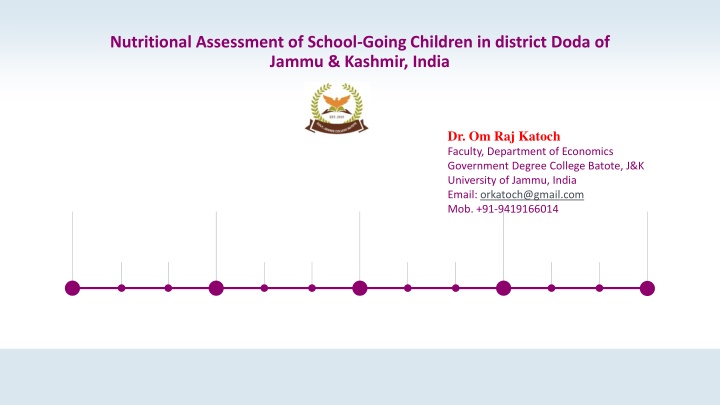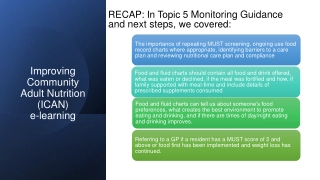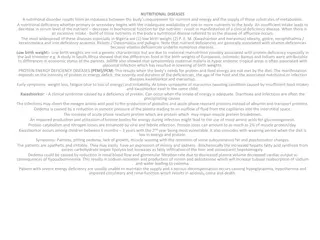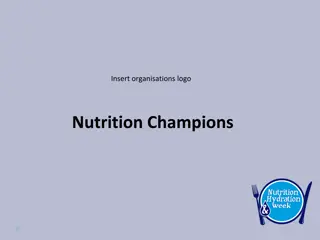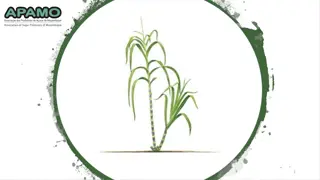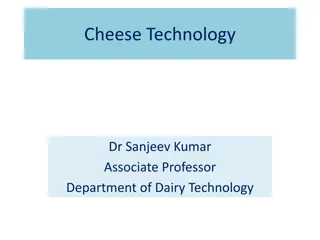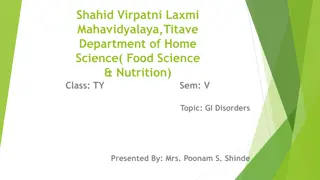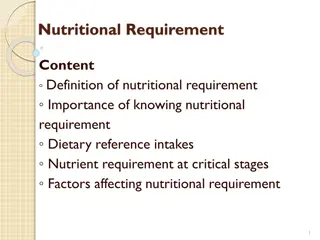Nutritional Assessment of School-Going Children in Doda District
The study examines the nutritional status of school children in Doda district, Jammu & Kashmir, India, focusing on indicators such as stunting, wasting, underweight, and overweight. It aims to construct a composite index of anthropometric failure to better understand undernutrition prevalence in the region.
Download Presentation

Please find below an Image/Link to download the presentation.
The content on the website is provided AS IS for your information and personal use only. It may not be sold, licensed, or shared on other websites without obtaining consent from the author.If you encounter any issues during the download, it is possible that the publisher has removed the file from their server.
You are allowed to download the files provided on this website for personal or commercial use, subject to the condition that they are used lawfully. All files are the property of their respective owners.
The content on the website is provided AS IS for your information and personal use only. It may not be sold, licensed, or shared on other websites without obtaining consent from the author.
E N D
Presentation Transcript
Nutritional Assessment of School-Going Children in district Doda of Jammu & Kashmir, India Dr. Om Raj Katoch Faculty, Department of Economics Government Degree College Batote, J&K University of Jammu, India Email: orkatoch@gmail.com Mob. +91-9419166014
What is Manutrition? 2021 The condition of a person that is influenced by the intake and utilization of nutrients is called nutritional status a) Stunting: Children who are less than two standards deviation below the median of the reference population in terms of height-for-age are considered short for their age or stunted. (c) Underweight: Children who are less than two standards deviation from the median of the reference population in terms of weight-for-age are considered underweight. b) Wasting: Children who are less than two standards deviation from the median of the reference population in terms of body- mass-index for age are considered wasted. (d) Overweight: Children who are above two standards deviation from the median of the reference population in terms of weight-for-age are considered overweight. 02 Nutritional Assessment of School-Going Children in district Doda of Jammu & Kashmir, India
Malnutrition 2021 Malnutrition among children is a major public health problem in India . As per the Estimate of NFHS -5, malnutrition in J&K Wasting 19 Percent Stunting 26.9 Percent Underweight 21 Percent Overweight 9.6 Percent 03 Nutritional Assessment of School-Going Children in district Doda of Jammu & Kashmir, India
Objectives of Study 2021 The present study was carried out in district Doda of Jammu & Kashmir with the following objectives: To construct the composite index of anthropometric failure (CIAF) based on three stunting, wasting and underweight - commonly used indicators of undernutrition. To know the prevalence of undernutrition among school going children of 6-14 years old in primary and middle schools of district Doda of Jammu & Kashmir. 04 Nutritional Assessment of School-Going Children in district Doda of Jammu & Kashmir, India
Importance of CIAF 2021 A development economist [Sved Peters Berg] argues that conventional indices i.e. stunting, wasting and underweight are not sufficient for measuring the overall prevalence of undernutrition among young children. These conventional indicators of malnutrition indicated different aspects of anthropometric failure. By using these indices only, we failed to answer the question as how many undernourished children are there in a particular region. Wasting 19 Percent Stunting 26.9 Percent Overweight 9.6 Percent Underweight 21 Percent 05 Nutritional Assessment of School-Going Children in district Doda of Jammu & Kashmir, India
Material & Methods 2021 Statistical Analysis -epi info 7 (available at www.cdc.gov) Area under Study Sample Size - 360 Anthropometric Measurement Questionnaire 06 Nutritional Assessment of School-Going Children in district Doda of Jammu & Kashmir, India
Results & Discussion Table 1.2. Nutritional status among school-going children by gender (6 14 years) (n = 360) Odds Ratio (OR) (95%CI) Chi-Square ( 2) Nutritional Status Male (n=184) Female (n=176) Total (n=360 2= 0.9865* P = 0.320591 Stunting (Height-for-Age) 35 (19.02) 41 (23.30) 76 (21.11) 1.29 (0.78-2.15) 2= 7.0751** P = 0.007816 Wasting (BMI-for-Age) 10 (5.44) 24 (13.64) 34 (9.44) 2.75 (1.27-5.93) 2= 14.1832** P = 0.000166 Underweight (Weight-for-Age) 10 (5.43) 22 (12.50) 32 (8.89) 2.49 (1.14-5.41) Source: Field Survey, Values in brackets are in percentages *Not significant ** Significant at 95% level
Results & Discussion Fig. 1.1 Prevalence of undernutrition by gender (6-14 years) (n=360) 25 23.3 21.11 19.02 20 15 13.64 12.5 9.44 8.89 10 5.44 5.43 5 0 Male Female Total Stunting Wasting Underweight
Results & Discussion Table 1.3 Nutritional status among school-going children by zones (6-14 Years) n=360) Zone-Assar (n=120) Zone-Bhagwah (n=120) Total (=360) Chi-Square ( 2) Nutritional Status Zone-Doda (n=120) 2= 6.0378** Stunting (Height-for-Age) 23 (19.17) 34 (28.33) 19 (15.83) 76 (21.11) P = 0.048855 2= 0.4547* Wasting (BMI-for-Age) 10 (8.33) 13 (10.83) 11 (9.17) 34 (9.44) P = 0.796638 Underweight (Weight-for-Age) 11 (9.17) 16 (13.33) 5 (4.17) 32 (8.89) 2= 6.2424** P = 0.044105 Source: Field Survey, Values in brackets are in percentages *Not significant ** Significant at 95% level
Results & Discussion Fig. 1.2 Prevalence of undernutritionby zone (6-14 years) (n=360) 30 28.33 25 21.11 19.17 20 15.83 15 13.33 10.83 9.44 9.17 9.17 8.89 10 8.33 4.17 5 0 Zone-Assar Zone-Bhagwah Zone-Doda Total Stunting Wasting Underweight
Table 4. Subgroups of anthropometric Failure among children aged 6 14 years Zone-Assar (n=120) Zone-Bhagwah (n=120) Zone-Doda (n=120) Total (n=360) Group Name Results & Discussion No. of Description No. of No. of No. of Childre Childre Childre Childre % % % % n n n n A No Failure Children whose height and weight are above the age- specific norms (i.e. above -2 z scores) and do not suffer from any anthropometric failure Wasting Only 62 51.67 39 32.50 80 66.67 181 50.28 B 10 8.33 13 10.83 11 9.17 34 9.44 Children with acceptable weight and height for their age but who have subnormal weight for height Wasting and Underweight C 5 4.17 3 2.50 2 1.67 10 2.78 Children with above norm heights but whose weight for age and weight for height are too low. D Wasting, Stunting and Underweight 2 1.67 3 2.50 0 0.00 5 1.78 Children who suffer from anthropometric failure on all three measures. Stunting and Underweight E 7 5.83 12 10.00 3 2.50 22 6.11 Children with low weight for age but who have acceptable weight, both for their age and for their short height. Stunting Only Children with low height for age but who have acceptable weight, both for their age and for their short height. F 23 19.17 34 28.33 19 15.83 76 21.11 Y Underweight Only 11 9.17 16 13.33 5 4.17 32 11.39 Children with acceptable height for their age but who have subnormal weight for age CIAF = B+C+D+E+F+Y = 58 48.33 81 67.5 40 33.33 179 49.72 Source: Field Survey,
Conclusion The prevalence of child undernutrition based on the different classification of CIAF, enables us to interpret the conventional indices of child undernutrition in terms of overall prevalence. The overall CIAF for zones Assar, Bhagwah and Doda were reported as 48.33 percent, 67.5 percent, and 33.33 percent respectively. CIAF in respect of zone Bhagwah was observed as the highest. The CIAF for Doda was observed as low (33.33 percent) The overall CIAF in the study area was reported as 67.5 percent. Reasons Income, Lack of irrigational facilities, etc.
